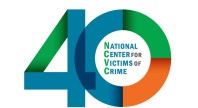Taking Action: An Advocate’s Guide to Assisting Victims of Financial Fraud
I’ve had my money taken; what do I do now?
It is the question faced by victim advocates every day. There are millions of victims of fraud in the United States each year. What can be done to help them?
Retirees lose their life savings in fraudulent investment schemes. Online shoppers send money, but get no goods or services in return. People get taken in by confidence tricksters, fake lotteries or scam dating sites. Increasing numbers have their credit card information or whole identity stolen.
While many organizations promote prevention strategies to consumers to avoid these kinds of crimes, what can we do for these millions of victims?
One answer is to empower the people on the front line – the consumer advocates, lawyers, law enforcement, counselors and victim service providers who come into contact with fraud victims every day. The National Center for Victims of Crime wanted to provide a resource for victim-centered services in the area of financial fraud. In partnership with the FINRA Investor Education Foundation, we created Taking Action: An Advocate’s Guide to Assisting Victims of Financial Fraud.
This guide is designed to provide advocates with practical victim-centered resources to help navigate the various options available for reporting crimes, protecting other assets and preventing re-victimization. It also offers advice on how to assist with psychological and – where possible – financial recovery.
As a complement and supplement to the guide, recovery checklists have been developed to guide advocates and for advocates to share with their clients. The checklists include recommended steps and prevention tips on the four major areas of financial fraud, including identity theft, investment fraud, mortgage and lending fraud, and mass marketing fraud.



